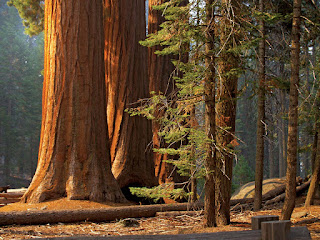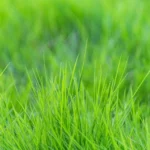
The giant sequoia is the largest species on earth. It belongs to the Cupressaceae family. This plant can only be found on the western slopes of the Sierra Nevada Mountains in California. The giant sequoia needs dry summers and cold, snowy winters for successful growth. Because of their incredible size, giant sequoias were immediately targeted by loggers. Giant sequoias are on the list of endangered plants.
Giant sequoias have very specific climate requirements, so specific that they grow naturally only in a narrow 260-mile strip of mixed conifer forest on the western slopes of the Sierra Nevada mountains, primarily between 5,000 and 7,000 feet in elevation.
Giant sequoia can reach 164 to 279 feet in height and 20 to 26 feet in diameter.
Giant sequoias are the third longest-lived tree species.
Giant sequoia has deeply furrowed bark that is 3 feet thick and brown in color.
They can have branches up to 8 feet in diameter.
Branches grow on the upper half of the tree. They form rounded crown.
Their bark can grow up to 3 feet thick.
Giant sequoia is evergreen plant. It develops miniature, scale-like leaves that are spirally arranged on the branches.
The largest of the sequoias are as tall as an average 26-story building.
Green cones appear on the tree at the age of 12 years, but they remain closed until the age of 20, when giant sequoia reaches maturity.
A few rare giant sequoias have grown taller than 300 feet, but it is the sequoia’s giant girth that sets it apart.
Male and female cones develop on the same tree. Adult tree has 11.000 brown cones that are 2.8 inches long (size of a chicken egg).
While the tallest tree in the world is the Hyperion Tree, a coastal redwood measuring in at a stunning 379.1 feet tall, the largest tree in the world by volume is General Sherman, a giant sequoia, boasting a total of 52,508 cubic feet.
Each cone produces around 230 seeds. They are miniature, flat and brown in color. Giant sequoia releases 300.000 to 400.000 seeds annually.
General Sherman is not only the largest living tree, but the largest living organism, by volume, on the planet.
Longhorn beetle lays egg in the cones. Larvae dig holes in the cones and facilitate opening of scales and release of seeds.
At 2,100 years old, General Sherman, weighs 2.7 million pounds, is 275 feet tall and has a 102-foot circumference at the ground.
Wind, insects and rodents spread seeds of giant sequoia. Seed can be dispersed 590 feet away from the parent tree.
General Sherman has branches that are almost 7 feet in diameter.
Fire plays important role in the life of sequoia. It clears the ground from competing plants, facilitates opening of the cones (and release of seeds) and enriches the ground with minerals required for the growth of new seedlings.
The General Grant Tree is the second largest tree by volume with 46,608 cubic feet.
Not so long ago, people tried to keep the forest fire under control to protect remaining sequoias. Without knowing that fire plays crucial role in the life of sequoia, people actually prevented successful regeneration of sequoias in the wild.
The third-largest tree by volume is the President; it has a whopping two billion leaves.
Bark of sequoia is resistant to fire. Traces of forest fire can be seen on the trunk of some old trees, but those trees are healthy beneath the surface.
Giant sequoias are incredibly hardy; they resist fungal rot, wood-boring beetles and their thick bark is flame resistant; they owe all of this unusual strength to the presence of tannic acids.
Wood of giant sequoia is brittle and it cannot be used in the construction industry. Even though giant sequoias are extremely tall and heavy, they can be used only for the production of fence posts and toothpicks.
Although sequoias were logged in the 1870s, their brittle wood does not make for good lumber; now, thankfully, most of the giant sequoia groves are protected.
Giant sequoias are popular tourist attraction. The biggest specimens are known as: General Sherman, General Grant, President, Lincoln, Stag and Bole.
Giant sequoias only reproduce by seeds which sometimes remain in the cone for 20 years.
Giant sequoia can survive more than 3500 years in the wild.









